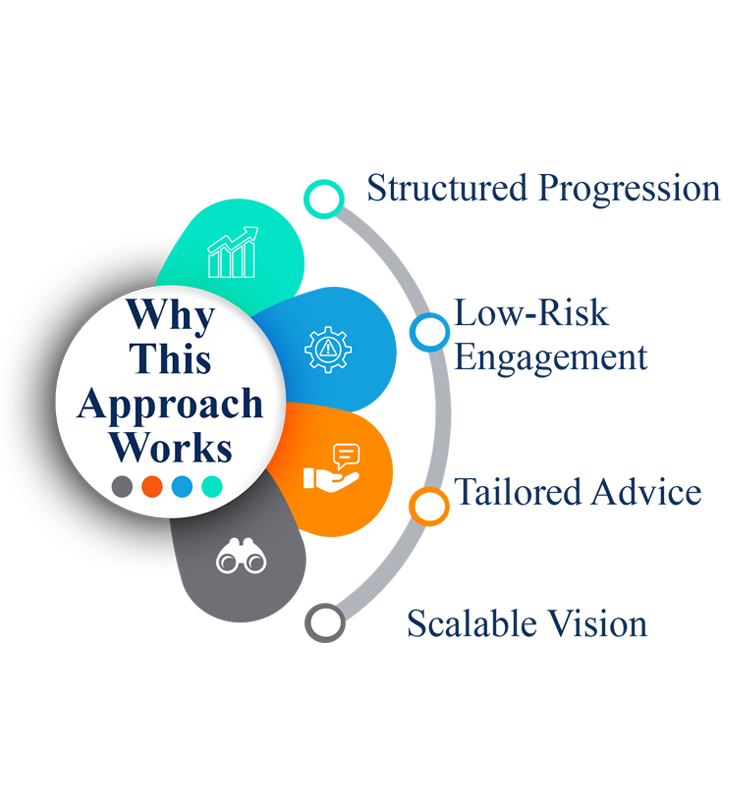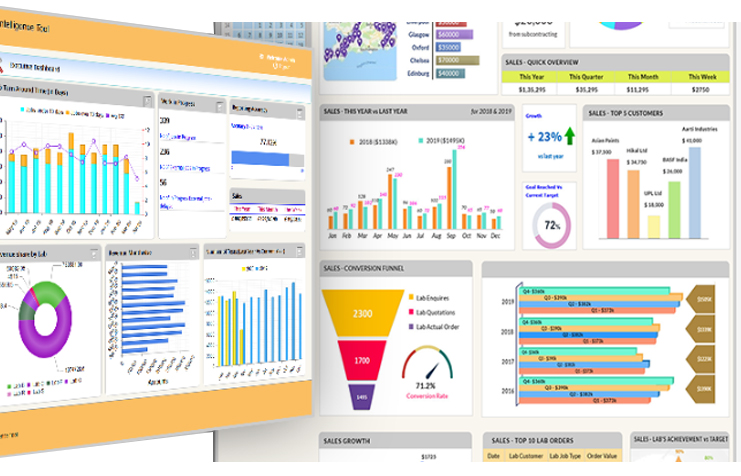Offering AI consulting to your clients in a structured and comprehensive manner can help demonstrate value while ensuring clarity and effectiveness. Below are the stages you can adopt in your AI consulting process, with details on what you should cover and emphasize at each stage:

Discovery & Assessment
Objective: Understand the client's current state, business goals, and challenges to identify AI opportunities.
What to cover:
- Define clear business objectives and KPIs aligned with AI solutions.
AI Vision & Goals:
- List short-term and long-term AI initiatives.
- Balance quick wins with transformative projects.
Prioritized Roadmap:
- Provide estimated costs and timeframes for proposed projects.
Budgeting & Timeline:
- Introduce responsible AI practices and frameworks for compliance and accountability.
Governance & Ethics:
Key Insights for Pitching:
Strategy & Roadmap Development
Objective: Develop a tailored AI strategy and prioritize implementation.
What to cover:
- Discuss pain points or inefficiencies in the client's processes.
- Identify business objectives (e.g., increase efficiency, reduce costs, improve customer experience, etc.).
Problem Understanding
- Discuss pain points or inefficiencies in the client's processes.
- Identify business objectives (e.g., increase efficiency, reduce costs, improve customer experience, etc.).
Problem Understanding
- Discuss pain points or inefficiencies in the client's processes.
- Identify business objectives (e.g., increase efficiency, reduce costs, improve customer experience, etc.).
Problem Understanding
Key Insights for Pitching:


Proof of Concept (POC) Implementation
Objective:Validate the AI use case through a small-scale implementation.
What to cover:
- Clearly define the scope, expected outcomes, and timeline.
- Use minimal resources and focus on feasibility.
Pilot Design:
- Choose tools and platforms suitable for the problem and the client’s infrastructure.
Technology Selection:
- Work closely with cross-functional teams to ensure alignment.
Stakeholder Engagement:
- Establish success criteria (e.g., accuracy, efficiency improvements, cost savings).
Evaluation Metrics:
Key Insights for Pitching:
AI Implementation & Integration
Objective: Deploy the AI solution at scale and integrate it into the client’s ecosystem.
What to cover:
- Seamless integration with existing systems or APIs.
- Address infrastructure upgrades if needed.
Technical Integration:
- Plan for continuous monitoring and fine-tuning.
- Implement dashboards or alerts to track performance.
Operationalization:
- Upskill client teams for effective AI adoption.
- Prepare employees for cultural shifts as AI workflows are introduced.
Training & Change Management:
Key Insights for Pitching:


Monitoring & Optimization
Objective: Ensure the AI solution remains effective and aligns with evolving business needs
What to cover:
- Regular evaluations against KPIs.
- Highlight ROI achieved and gaps to address.
Performance Monitoring:
- Incorporate user and client feedback into model adjustments.
Feedback Loops:
- Propose expanding AI use to other parts of the business.
Scalability & New Use Cases:
Key Insights for Pitching:
Final Deliverable Example
You can prepare a Consulting Report including:






